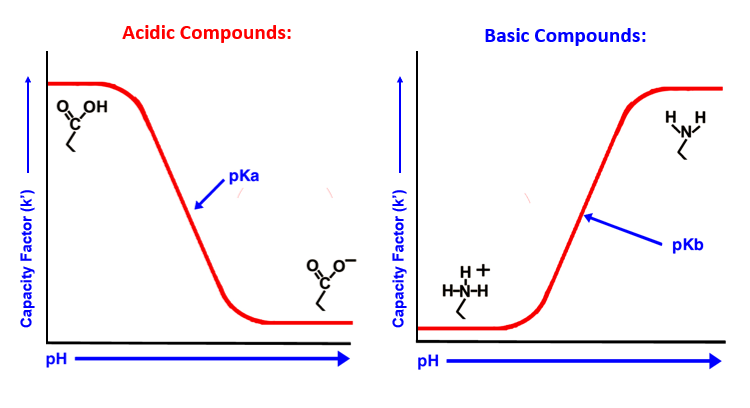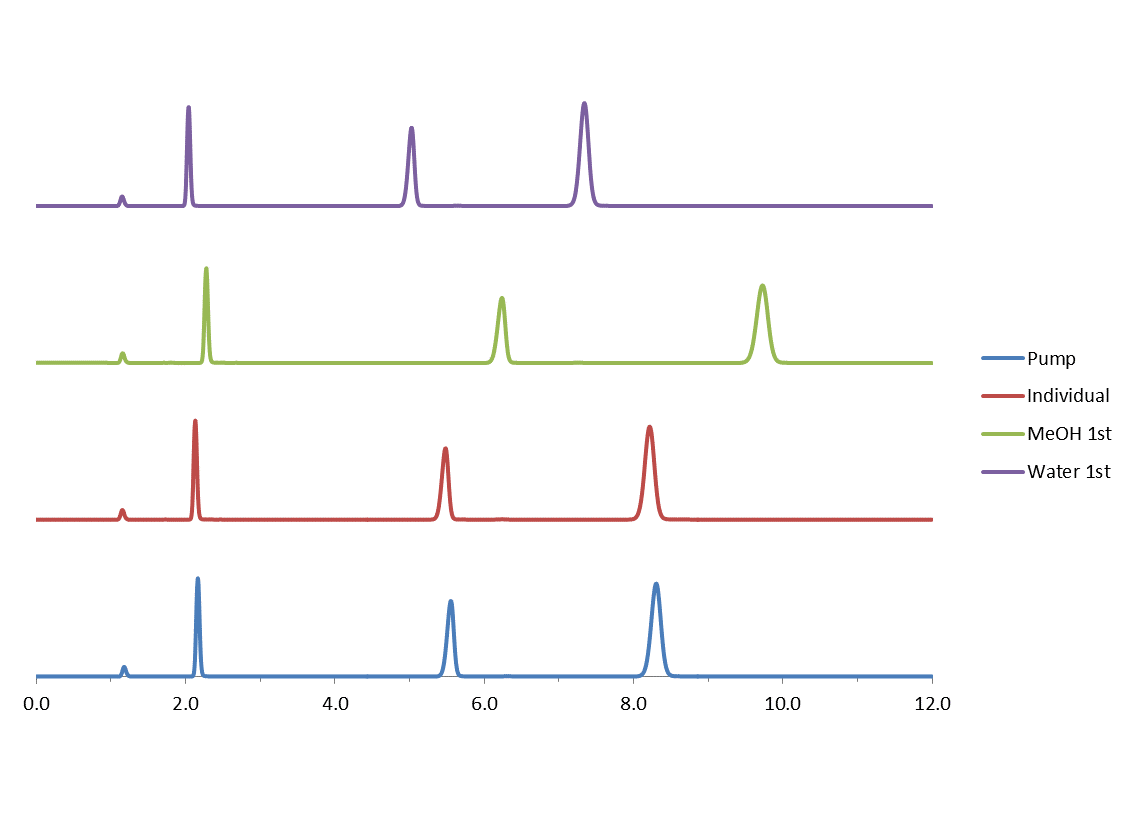A buffer is an AQUEOUS solution containing a weak acid and its conjugate base (or a weak base and its conjugate acid). The pH of a buffer solution changes very little when a small amount of strong acid or base is added to it and can help to negate condition changes in an analytical method when small environmental factors vary. Buffer solutions are used to maintain the pH at a nearly constant value. They are resistant to pH change due to the presence of an equilibrium between this weak acid (HA) and its conjugate base (B).
(acid) ⇌ (hydrogen ion) + (conjugate base)
How a buffer works
When some strong acid (more H+) is added to an equilibrium mixture of the weak acid and its conjugate base, the equilibrium is shifted to the left, in accordance with Le Chatelier's principle. Similarly, if a strong base is added to the mixture, the hydrogen ion concentration decreases by less than the amount expected for the quantity of base added.
When preparing a buffer there are a few general guidelines you should adhere to:
- Calibrate pH meter; ideally at pH values above and below target for your buffer preparation There are calibrated buffer solutions sold for this purpose
- Weigh out buffer salt to give desired buffer concentration
- Add to volumetric flask containing HPLC grade water and mix thoroughly to dissolve
- Using a pH probe and pH meter, measure the pH of the solution
- Adjust the pH to the desired value by additions of small volumes of strong acid and/or strong base
- Once the pH is correct, dilute the solution to the final desired volume and mix well
In HPLC, buffers are typically used to control secondary interactions which are generally regarded as ‘unwanted’ in the chromatographic world. They are also used to control the ionization state of the analyte to ensure it is not present in more than one ionized state. The pKa of a compound presents the pH at which it is 50% ionized and 50% neutral. If you work at this pH you will see split peaks and variable retention times. All methods should strive to work at least two pH units away from the pKa of their target analyte.


When preparing isocratic mobile phases there are a few further considerations to ensure good method robustness
- Pre-Mix your mobile phase where possible, this will eliminate error from the pump
- Always use the same method for preparation; for example if you add the water first, you should always add it first. If you measure the individual components and then mix, you should always do it in this way. Do not change this process as the results can vary significantly in terms of analyte retention time.
Below is an experiment which shows this variability when the mobile phases were mixed in the following ways
- Water first: 400 mL water in graduated cylinder, add to 1-Liter volumetric flask, dilute to mark with MeOH
- MeOH first: 600 mL MeOH in graduated cylinder, add to 1-Liter volumetric flask, dilute to mark with Water
- MeOH and Water measured individually: 600 mL MeOH in graduated cylinder, transfer to mobile phase reservoir; 400 mL Water in same graduated cylinder and transferred to mobile phase reservoir
- Allow pump to mix A = Water with B = MeOH

Flow rate 1.25mL/min
Inj Vol 2µL
Buffer concentrations are also important, it is generally regarded that concentrations below 10mM do not offer the buffering capacity required to control silanol activity, or ionization state of a compound and 10mM would be considered the minimum effective concentration for reversed phase and HILIC. For other techniques such as size exclusion, significantly higher concentrations are required and it is not uncommon to see concentrations is excess of 100mM for these methods. Buffer concentration is something which must be carefully balanced to ensure solubility in all conditions can be achieved. When working under reversed phase conditions, you may need to limit the concentration of the buffer you are working with if the method contains high levels of organic (for example across a gradient) to ensure no precipitation of the buffer occurs.
The mobile phase contributes as much to selectivity as your stationary phase and care with selection and preparation is as important as batch testing stationary phases when developing robust HPLC methods.
